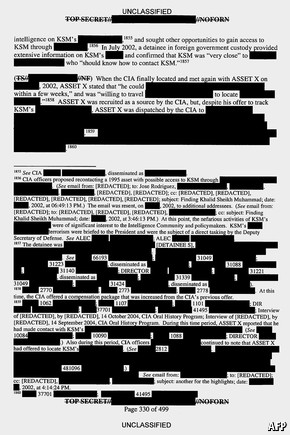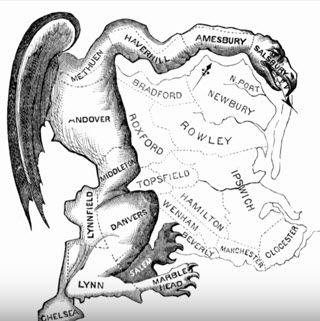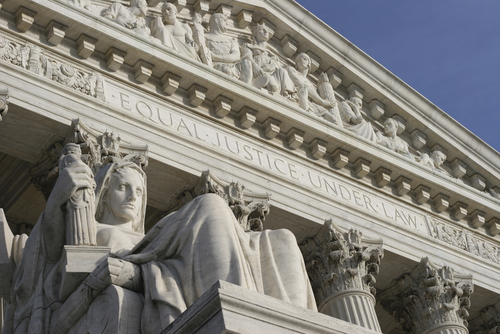The Campaign to Discredit the Torture Report
The uproar over the release of the torture report by the Senate Intelligence Committee revealed an America that has lost its way. We are a country that has always liked to think of itself as holding to a 
Nothing to hide
higher code of conduct than tyrannical and repressive countries elsewhere in the world, but the pronounced split in the arguments over the report showed that we have no universally held standards or ideals of “who we are as a nation” and such notions of exceptionalism are an illusion.
One thing became clear: there are those who believe that all rule of U.S. law and international laws and conventions should be cast aside to protect this country, and across a wide gap there are others who believe that America should set an example as a paragon of the human rights and moral principles that we had heretofore believed we stood for.
As with every other topic nowadays, the torture issue hews along political lines. A huge campaign had been mounted to counteract the report, Republicans leading the charge. Anchor Dagen McDowell of Fox Business was within 24 hours somehow able to assess the 525 page summary as “a partisan, slipshod report”. For Sean Hannity at Fox News “the mainstream media’s liberal bias was on full display”, citing CBS and NBC.
Dick Cheney expectedly called the report “a crock” and “hooey”, and took it further in an interview by Fox’s Bret Baier with, “The report’s full of crap. I said ‘hooey’ yesterday, and let me use the real word”.
Criticism of the report went on throughout two days and nights of programming, but suffered from the weakness of name-calling, whereas other channels could draw from hundreds of pages that cited actual documents that the CIA had turned over to the Senate committee. Andrew Napolitano, a former judge who acts as a judicial analyst at Fox, reminded colleagues that “Everything in those 500 pages are [sic] footnoted with documents which substantiate what was said”. His reaction to Cheney was, “For someone to say the report was ‘hooey’ was their emotional reaction to the report rather than their intellectual analysis”.
To counter factual documents, the dissenters had to evolve a number of recurring themes:
it wasn’t torture
Those campaigning to neuter the report were careful to use the euphemism “enhanced interrogation techniques” and “EITs” and hid behind the sham that EITs were not torture and were legal. Fox News commentator Eric Boling slipped and said “…torture, excuse me, I meant enhanced interrogation techniques”. Fox reporter James Rosen unbraided Bill O’Reilly with “Bill, I’m afraid I have to caution you against the use…of the term ‘the torture report’ because to use that term is in effect to validate the body of conclusions, and I don’t think…” O’Reilly interrupted with “Don’t be a pinhead”. (We salute you, Bill).
After 9/11. when asked to do whatever it took to get information from terrorists, CIA Director George Tenet went to the White House to say, paraphrased by former CIA officer Glenn Carle, “We are always the ones who take the fall…we will not act unless we have clear guidance on what is legal”. “Of course”, said the office of the Vice President, or so Carle recalls, and they “went to the political hack, John Yoo, who came up with the torture memorandum”. Actually, there was a series of memoranda by Yoo and Jay Bybee of the Justice Department that said the Geneva Conventions did not apply to Afghanistan detainees and that redefined torture as outside the methods used by their interrogators.
The memoranda became the cover recited by all to deny that the interrogation techniques were torture. “Whatever we have done, is legal”, said George W. Bush when in office. Yoo is in denial to this day. Asked on “The O’Reilly Factor” about waterboarding, he said, “I think most of the enhanced interrogation measures would strike most Americans…as reasonable. The hard thing is waterboarding; it’s very close to the line. Torture under our law is prohibited. Waterboarding, which does not cause any permanent physical injury, was a close question”. That was the mantra ordered up from the lawyers to give legal cover to all in the administration. If it doesn’t cause permanent bodily harm, it isn’t torture.
Col. Oliver North showed up on cable to “point out that waterboarding was never considered to be torture until years after 9/11 oh-one”. How then to explain why American soldiers were prosecuted for waterboarding captives in the Philippine insurrection of 1903?
“Three out of the last four Attorneys General [i.e., not Holder] have defined this as not being torture. So let’s get the legal definition off the table”, says Karl Rove. Do we really need any more to make clear theirs was a gruesome fraud?
Not torture?
Internal CIA documents exposed the use of :
● “sleep deprivation [that] involved keeping detainees awake for up to 180 hours, usually standing or in stress positions, at times with their hands shackled above their heads”,
● placing people in tiny confinement boxes where they couldn’t stand, couldn’t sit up straight, for many hours at a time,
● pumping food through the anus in what was called “rectal dehydration”,
● causing the loss of an eye and death from hypothermia,
● threatening death,
● waterboarding, described as “a series of near drownings” rendering the subject “completely unresponsive, with bubbles rising through his open mouth” and inducing “convulsions and vomiting,
● confining detainees for long periods in “complete darkness and constantly shackled in isolated cells with loud noise or music and only a bucket to use for human waste”,
● leading to prisoners who consequently “exhibited psychological and behavioral issues, including hallucinations, paranoia, insomnia, and attempts at self-harm and self-mutilation”.
No, we’re not trying to evoke sympathy for terrorists, although the report does tell us there were CIA employees who were physically ill as they watched the application of torture and others who wrote memos saying they wanted nothing to do with it, asking for transfer. Rather it is to point up how chilling it is that some, such as the former Vice President of the United States, are so obscene as to refuse to acknowledge this as torture, while, of course, not possibly able to withstand such brutality themselves. Cheney, who avoided even the hardships of the military with five deferments (“I had better things to do”), continues to say all this was legal. Representative Peter King (R-NY) of the Homeland Security Committee and chair of the House Subcommittee on Counterterrorism and Intelligence said, “We’re not talking about anyone being burned, or cut or stabbed or anything like that. We’re talking about people being made to stand in awkward positions”. Waterboarding, sleep deprivation, etc., how is that not torture?, he was asked. “Well, the Justice Department clearly said that it was not torture. It could have been rough treatment but there’s a difference between that and torture. As far as the waterboarding, I don’t consider that torture”.
Nor did Bush. When briefed in April 2006, CIA records have the president expressing “discomfort” with the “image of a detainee, chained to the ceiling, clothed in a diaper, and forced to go to the bathroom on himself”. Five months later NBC’s Matt Lauer asked the President in the Oval Office, “Were you made fully aware of all of the techniques that were used, for example against Khalid Sheikh Mohammed (KSM) and did you approve all of those techniques?” Bush answered, “I told our people get information without torture and was assured by our Justice Department that we were not torturing.”
The subject is what we became — those who led our country, at any rate — who so quickly, once attacked, abandoned in our name and under our flag the moral precepts that undergird this nation and that we had so hypocritically, as it turned out, preached to the rest of the world. We instead sank to the depravity of a Peter King.
we did it to our own
This is another theme used by the report’s detractors. Wasn’t our own military subjected to some of this treatment? Those trying desperately, we can only say, to diminish the power of the report were referring to the SERE program, which stands for “Survival Evasion Resistance Escape”, in which some of the same physical punishment was inflicted on our military in training. So how can it be torture if it was used on our own? Because it was torture. That was the point. It was meant to expose the troops to what might be done to them if captured — but just a light dose, not the 83 waterboardings of Abu Zubaydah, not sleep deprivation on their feet for as much as 180 hours, not weeks in black hole solitary.
Waterboarding is always spoken of as the worst torture method, but Pultizer-winner Washington Post reporter Dana Priest, who broke the story on the existence of CIA “black sites”, makes the point that, far more than momentary waterboarding, “isolation is one of the most — and sleep deprivation in combination — psychologically devastating thing they can go through”.
deflection
Shortly after its release, the dissenters hit upon moral equivalence as a way to diminish the torture report. In unity like a murmuring of starlings, interviewees all seemed briefed to bring up Obama’s drone program with the objective of sanitizing the torture revelations of the Senate report by comparison. Haven’t drones killed who knows how many innocent civilians compared to the discomfort of a few terrorists?
No matter that the Senate report was not Obama’s report and indeed the White House had held up its approval for months, as we reported, demanding a level of blacked-out redactions that would have rendered it unintelligible. And rather than hoping to use antimatter to annihilate the other matter, we would say let’s have the incoming members of the appropriate Senate committee launch the next investigation on Obama’s drone warfare.
Cheney, too, resorted to moral relativism on “Meet the Press” the Sunday after the report came out. Was he troubled to read that there were detainees who had faced lengthy incarceration but were found uninvolved in terrorism? He answered that the greater problem was “with the folks that we did release that end up back on the battlefield”. And about torture? “Torture is what the al Qaeda terrorists did to 3,000 Americans on 9/11,” Cheney said on “Meet the Press”. “There is no comparison between that and what we did with respect to enhanced interrogation”. Yes, if you want to use the atrocities of the worst of humanity as a rationale for a shift our own standards.
why now?
“These techniques have been stopped. These are techniques allegedly [sic] used in the Bush administration, so why now if they’ve been stopped?” asked Andrea Tantaros (who then brought up drones). She is billed as a political analyst on Fox News and whose “awesome” outburst would be ridiculed on the comedy circuit. Bret Hume called the timing of the report’s release”inexplicable”. Both referred to likely retaliation around the world and the endangerment of American lives. The Obama administration did put the military and embassies on alert. Others asked when would there be a good time in the permanent war against terrorists. Others still made the point that the world has long known what we did. The report was an official acknowledgement of misdeeds, not news.
effective/ineffective
The strongest indication that our “moral compass” had gone south was that the argument became not that torture was wrong, but whether it was effective or ineffective in gaining intelligence.
Saxby Chambliss (R-AL), a dissenting member of the Senate Intelligence Committee, insisted “The CIA’s detention and interrogation program was effective and produced valuable and actionable intelligence”. Bush political advisor Carl Rove wanted to “remind the American people, the vast majority of whom are not part of the hard left, that these techniques worked in a dark moment for our country to keep our country safe”. Eric Boling of Fox News’ “The Five” and “Cashin’ In” said “I celebrate what the CIA did …They aggressively interrogated, legally, …some bad guys and they got some intelligence that led to the capture of Osama bin Laden.”
Arizona’s Senator John McCain became the lonely moral anchor of his Party when he took to the Senate floor to challenge its consensus with his own unimpeachable knowledge of the subject:
“I have long believed some of these practices amounted to torture as a reasonable person would define it, especially, but not only, the practice of waterboarding, which is a mock execution and an exquisite form of torture. I know from personal experience that the abuse of prisoners will produce more bad than good intelligence. I know that victims of torture will offer intentionally misleading information if they think their captors will believe it. And what the advocates of harsh and brutal methods have never established is that we couldn’t have gathered as good or more reliable intelligence from using humane methods. “
In what was called the only press conference ever given by a CIA director, John Brennan said the report’s conclusion that enhanced interrogative techniques yielded no useful intelligence is “a point on which we still fundamentally disagree”. But he continued with the unexpected.
“Let me be clear. We have not concluded that it was the use of EITs within that program that allowed us to obtain useful information from detainees subjected to them. The cause and effect relationship between the use of EITs and useful information subsequently provided by the detainee is in my view unknowable. Irrespective of the role EITs might play in a detainee’s provision of useful information, I believe effective non-coercive methods are available to elicit such information, methods that do not have a counterproductive impact on our national security and on our international standing.”
in a vacuum
The Senate investigators did not interview any of the interrogators, nor CIA principals, which came in for much criticism. For Brit Hume that made the report no different than the Rolling Stone report that failed to interview any of the accused in the fraternity rape scandal.
Rather than interviews, the Senate committee took the deliberate approach of researching millions of pages of CIA e-mails and documents, finding them incontrovertible, rather than entertain the denials they could expect in personal interviews. As if to prove the committee’s point, no later than the morning after the report’s release, an op-ed appeared in The Wall Street Journal by six top CIA officials who wrote what the committee likely would have heard. Three former directors — George Tenet, Porter Goss and Michael Hayden — and three deputy directors called the report “a poorly done and partisan attack” that ignored the “ticking bomb” context of the time which there was the “certain knowledge that Osama bin Laden had met with nuclear scientists and wanted nuclear weapons”. The group said that the harsh interrogation methods were material in “disrupting terrorist plots and preventing mass-casualty attacks” that saved thousands of lives”.
the bin laden connection
Much was made of the string of connections that led to the killing of Osama bin Laden originating with the first “high-value” captive, Abu Zubaydah. But the op-ed writers made him a flawed choice for contending that “a powerful example of the interrogation program’s importance was the information obtained from Abu Zubaydah” and by maintaining that “We are convinced that [he] would not have talked absent the interrogation program”.
The choice was inapt because Zubaydah was first interrogated by then-FBI agent Ali Soufan, who gained Zubaydah’s cooperation straight away, using the non-coercive techniques in which he is expert and which he has said in his book and many interviews are far more productive for extracting intelligence. It was only after 47 days in detention that the CIA brought in “some outside contractors…to run the most sensitive program in United States history”, in Soufan’s words, and from that moment forward, subjected to the brutal treatment of the “interrogation program” the op-ed authors speak of, Zubaydah went silent. When the op-ed group says, “Information provided by Zubaydah through the interrogation program led to the capture in 2002 of KSM associate and post-9/11 plotter Ramzi Bin al-Shibh”, they are contradicted by the actual interrogator on the ground.
The op-ed writers refer to the Justice Department’s 2009 review of the interrogation program of “whether any unauthorized techniques were used by CIA interrogators, and if so, whether such techniques could constitute violations of U.S. criminal statutes”. That careful wording says that the “authorized” techniques that had been given the blessing of John Yoo were not questioned, only those not in that list. The prosecutor conducting the survey “determined that no prosecutable offenses were committed”.
the report is biased
Those on the right claim the report is biased because no Republicans on the committee took part. As abstaining does not make those who participated biased, and as the report is drawn from actual CIA documents, where would bias come from? John Yoo tried to make the case on MSNBC’s “Morning Joe”. The author of the memo that green-lighted torture for the Bush administration said, “This is a committee that started out with a conclusion…and so obviously when you start out with a conclusion you can cherry-pick your documents to make them fit”.
But what a staggering abundance ripe for picking! The 525-page report is only a summary, behind which are 6,700 pages with 38,000 footnotes. And if investigators were looking for torture and found it, that’s evidence, not cherry-picking. The Washington Post op-ed made the same accusation that “the staff ‘cherry picked’ its way through six million documents, ignoring some data and highlighting others, to construct an argument against the program’s effectiveness”. But the 6,700 pages are in the hands of the Senate committee and have not been released, so this can only be unsupported speculation.
The committee undertook the investigation five and a half years ago on hearing that the CIA had lied to Congress about tapes of interrogations it had secretly destroyed that the committee was never told existed. Proof that the motive was not to attack the Bush administration was that the study examined only the CIA and the vote to launch the probe was a bipartisan 14 to 1.
That did not deter Fox News’ Jesse Watters from saying, “the Senate Democrats are just trying to get in one last shot at Bush before they go into the minority”. Dianne Feinstein didn’t have Bush in mind but was quite aware that “there is some evidence that this report would never see the light of day” once Republicans took over the committee in January.
forgotten context
In its criticism of torture, the report forgets the context of panic in the days after 9/11 that caused some wrong turns. Jose Rodriguez was director of the National Clandestine Service of the CIA. On Fox’s “Kelly File” he returned us to that moment:
“I want to take you back to May of 2002. We were getting intelligence of a pending second wave of attacks. We didn’t have details as to when, where, how, but we knew it was coming. We knew that al Qaeda had a biological weapons program, an anthrax program that they wanted to use against us and the anthrax attacks of a few months before had tightened concerns for a biological weapons attack on our country. We knew that they were talking to Pakistani scientists about developing a nuclear weapon of some sort. We felt we were in a ticking time bomb and we needed to do something about it. And we had Abu Zubaydah in our custody, who was the highest level detainee ever in our custody and we knew he had information that we had to get from him to protect the country”.
As the arguments flew back and forth, there was an abysmal lack of understanding why such accountability investigations are made. It is important for a country such as this to examine its past and expose its failings, to get it all out. The concerted push from the right to discredit the report, to fight to a standoff, is meant to exonerate the use of torture in the past, but to the degree that the campaign has succeeded, it is certain to set the stage for its use in the future when threatened again.
Amid the foreign outrage at America’s conduct at the century’s beginning, though, there was some credit paid to our country for such forthright admission of shame. “There’s never a perfect time to release a report like this but it was important for us I think to recognize that part of what sets us apart is when we do something wrong , we acknowledge it.” That was Obama, but it would have been better said by someone who had not tried to block the report’s release for so long.




